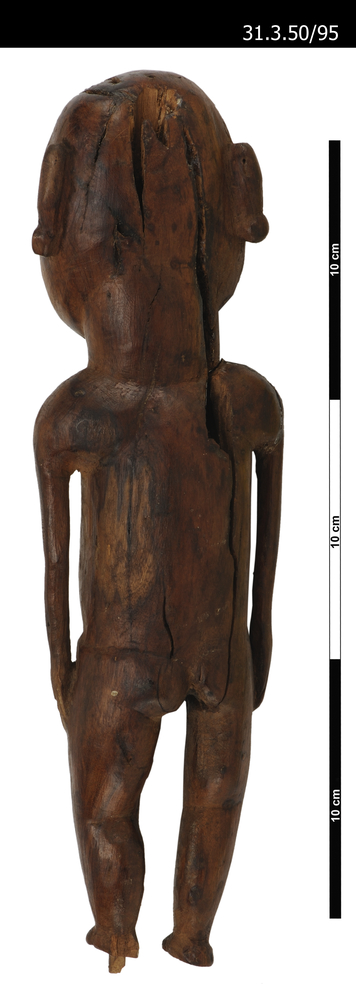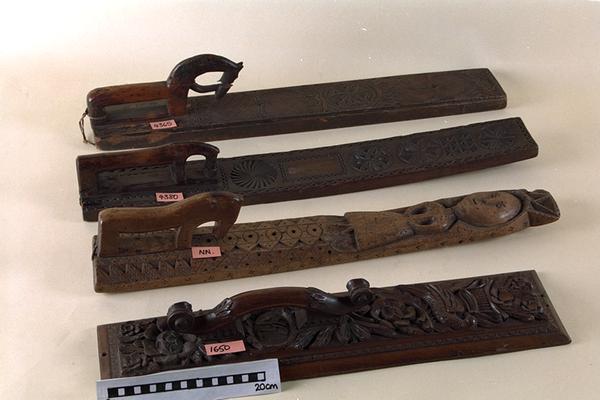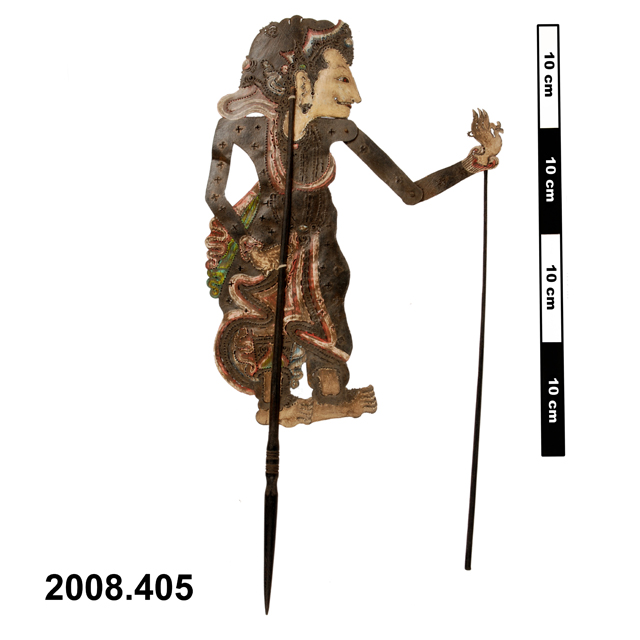
Human figure, Toromiro wood. Easter Island, early 19th century.
Human figure, Moai Tangata, Easter Island, Eastern Polynesia There are not a very large number of moai tangata statuettes left in existence, and they seem to be outnumbered in museum collections by the emaciated and skeletal moai kavakava figures. Moai tangata are generally thought, like the great stone ‘heads’ (also moai) to be depictions of revered ancestors, and the figure's enlarged earlobes show the person's chiefly status. The term tangata indicates maleness, but in this particular example, the subject's biological sex is completely unknowable. This is not unusual, and many Rapa Nui (Easter Island) figures are uncertain in this regard, although naked. This figure is a particularly charming example, with a facial expression that seems serene and full of understanding, while many others seem anxious and remote. The figure’s eyes are constructed in the usual manner by carving little rings of fish vertebra, into which are set chips of obsidian. As with many other examples, one of the eyes has been lost or intentionally removed. Toromiro wood. Early 19th Century. Formerly in the private collection of Mr William Oldman, and purchased from his widow in 1950. This piece is likely to have been acquired by Oldman after he published his collection of Easter Island material in 1940 in the Journal of the Polynesian Society.
































































































































































































































































































































































































































































































































